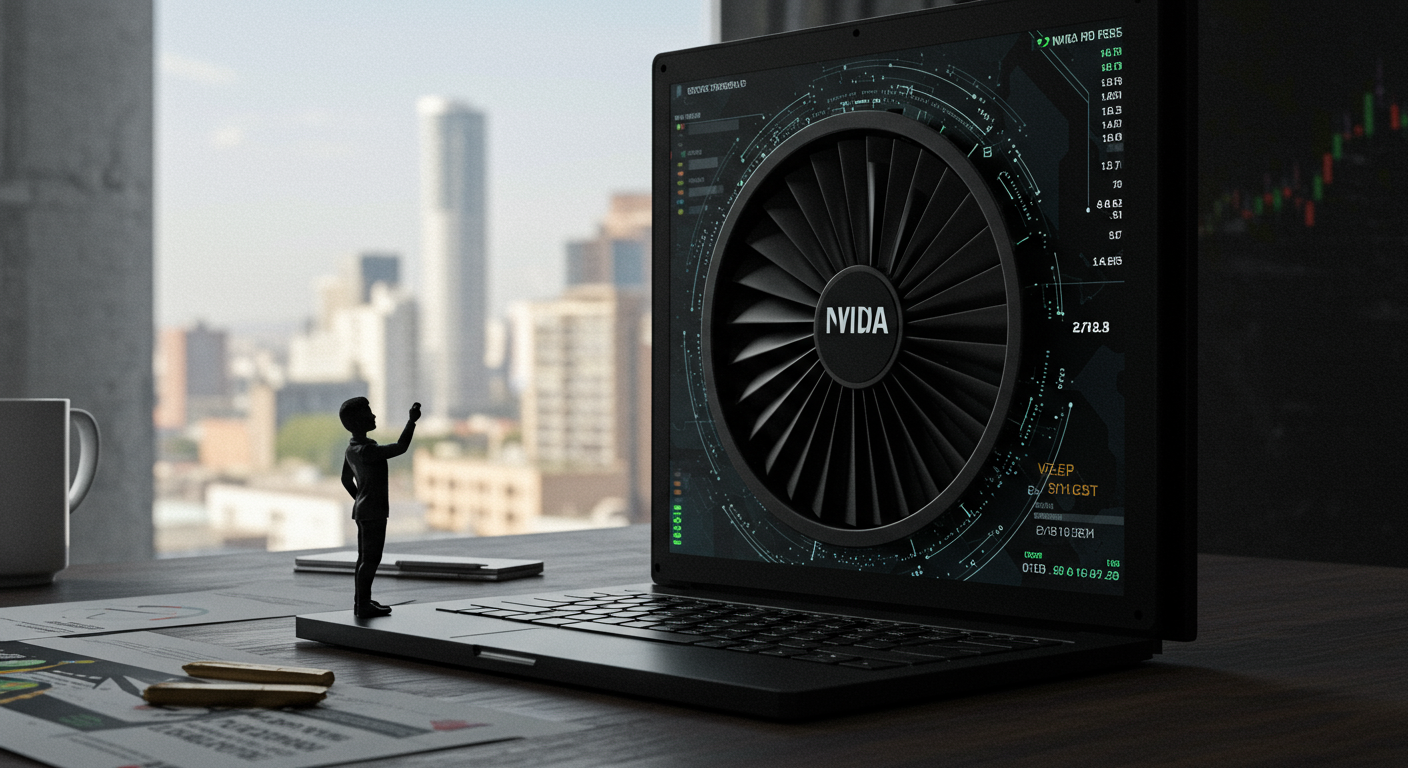An investment story is currently dominating financial headlines, and it centers on a company that has become synonymous with the artificial intelligence revolution: NVIDIA. You’ve likely heard the name, but recent events have pushed the company into a truly historic territory, sparking conversations among both seasoned traders and those just starting to explore the market. In the coming paragraphs, we will deconstruct what’s happening with NVIDIA, explain the key financial concepts at play, and explore what it might mean for the broader market and individual investors. This analysis is designed to give you a clear understanding of one of the biggest financial news events of the year.
The Milestone Moment: NVIDIA’s Meteoric Rise
Within the last few days, graphics chip designer NVIDIA accomplished two monumental feats. First, its total market value soared past the $3 trillion mark, an exclusive club previously only occupied by Microsoft and Apple. For a brief period, it even surpassed Apple to become the second most valuable company in the world. Second, the company is proceeding with a much-anticipated 10-for-1 stock split, which will take effect very soon.
These are not just abstract numbers; they represent a massive shift in the technology and investment landscape. To see a company’s valuation grow so rapidly is a clear signal of powerful economic forces at work. The driving force behind this incredible growth is the global boom in Artificial Intelligence (AI). NVIDIA doesn’t just participate in the AI industry; its sophisticated chips, known as GPUs (Graphics Processing Units), are the essential hardware powering it. From generative AI models like ChatGPT to complex data centers, NVIDIA’s technology is the bedrock. This has created an almost insatiable demand for its products, sending its revenue and stock price to unprecedented heights.
Decoding the Terminology: What is a Stock Split?
For many, the term “stock split” can sound confusing. Let’s demystify it with a simple analogy. Imagine you have a delicious, large pizza that costs $100. It might be too expensive or too large for one person to buy. Now, imagine you cut that same pizza into 10 equal slices. Each slice now costs only $10. You still have the same amount of pizza in total, but now it’s more accessible and affordable for more people to buy a piece.
A stock split works in exactly the same way:
- The Company’s Value Stays the Same: A 10-for-1 split does not magically make NVIDIA ten times more valuable. The company’s total market capitalization (the total value of all its shares combined) remains unchanged at the moment of the split.
- More Shares, Lower Price: If you owned one share of NVIDIA trading at, for example, $1,200 before the split, you would own ten shares trading at $120 each after the split. Your total investment value remains the same ($1,200).
- The Goal: The primary reason companies do this is to make their shares more accessible to retail investors—everyday people like you and me. A lower share price can make it psychologically and financially easier for someone to invest, which can increase trading volume and liquidity.
Understanding this concept is crucial for anyone interested in investment strategies, as stock splits are common tools used by successful, high-growth companies.

The AI Gold Rush: Why This Matters for the Broader Economy
NVIDIA’s success is more than just a single company’s story; it’s a barometer for the entire AI-driven economy. Companies across all sectors, from healthcare and automotive to entertainment and finance, are scrambling to integrate AI into their operations. To do this, they need massive computing power, and that computing power is largely supplied by NVIDIA’s chips.
This creates a powerful ripple effect. The demand for NVIDIA’s products leads to:
- Infrastructure Spending: Major tech giants like Amazon, Google, and Microsoft are investing billions in building new data centers filled with NVIDIA GPUs.
- Job Creation: The AI boom is creating new roles for engineers, data scientists, and AI specialists.
- Increased Productivity: Businesses that successfully adopt AI can become more efficient, potentially leading to broader economic growth.
However, this heavy reliance on a single company also introduces risk. Any disruption to NVIDIA’s supply chain or a slowdown in AI spending could have significant consequences for the market. It highlights the importance of diversification and staying informed about the latest trends, which you can do by following our regular updates in the news section.
What Should an Everyday Investor Consider?
Watching a stock soar can be exciting, but it’s essential to approach it with a level head. The lower post-split share price might make NVIDIA stock seem more tempting, but the underlying valuation of the company hasn’t changed.
Here are some key takeaways for consideration:
- Focus on Fundamentals: Instead of just looking at the stock price, consider the company’s long-term prospects, its competitive position, and its overall valuation. Is the growth sustainable? Who are the competitors?
- The Dangers of FOMO: The “Fear Of Missing Out” can lead to poor investment decisions. Chasing a stock simply because its price is rising rapidly is a speculative gamble, not a sound strategy.
- Portfolio Context: How does an investment in a high-growth tech company fit into your overall financial plan? A well-balanced portfolio is typically diversified across different asset classes and industries to manage risk. A single stock, no matter how successful, should not represent your entire savings plan.
Disclaimer: This article is for informational and educational purposes only. It should not be considered financial or investment advice. All investment decisions should be made based on your own research, risk tolerance, and consultation with a qualified financial professional. Past performance is not an indicator of future results.
Frequently Asked Questions (FAQ)
Does a stock split directly increase the value of my investment?
No. A stock split does not, by itself, change the total value of your holdings. It simply divides your existing ownership into a larger number of shares at a correspondingly lower price per share. The company’s total market capitalization remains the same immediately after the split. Any subsequent price increase would be due to market factors, such as increased demand from new investors, not the split itself.
Is NVIDIA’s success a sign of a new tech bubble?
This is a topic of intense debate among market analysts. On one hand, NVIDIA’s earnings and revenue growth are real and substantial, driven by tangible demand for its AI chips. This is different from the dot-com bubble of the late 1990s, where many companies had high valuations with little to no profit. On the other hand, the valuations in the AI sector are extremely high, which means they are priced for near-perfect future execution. Any stumbles or a slowdown in growth could lead to a significant price correction. Investors should be aware of both the incredible potential and the elevated risks.



